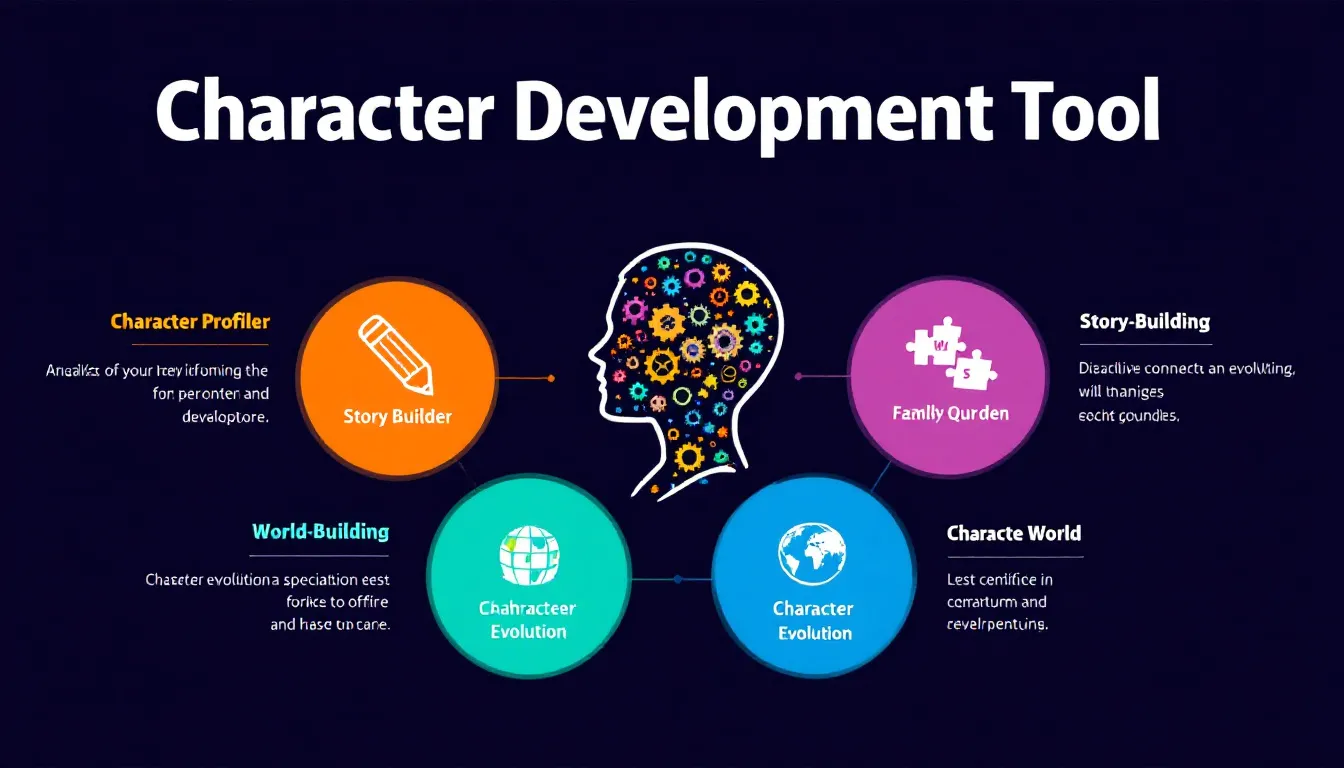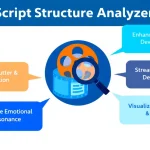Is this tool helpful?
How to Use the Character Development Tool Effectively
The Character Development Tool helps you create well-rounded, multi-dimensional characters for your script based on your story’s details. Follow these steps to get the most out of it:
- Enter your script’s title: In the “Title of the script” field, provide the name of your script. For example, try “Silent Horizon” or “Veil of Shadows”.
- Describe the genre and setting: Use the text area to explain your story’s world and style. Examples include “Post-apocalyptic survival in a flooded city” or “Fantasy epic in a kingdom torn by civil war”.
- Outline the main themes: List the key ideas your story explores. For instance, “Redemption, trust, and sacrifice” or “Power struggles, identity, and freedom.”
- Specify the number of characters: Enter how many characters the tool should generate, between 1 and 10. You might choose 3 for a tight-knit team or 8 to populate a complex story world.
- Generate characters: Click the “Generate Characters” button. The tool will create detailed profiles—including names, backgrounds, motives, and character arcs—that fit your inputs.
- Review the results: Scroll down to see the generated characters. Each profile offers depth and narrative potential to help you envision your cast clearly.
- Copy and save: Use the “Copy to Clipboard” feature to transfer character details quickly to your notes or writing software.
Introducing the Character Development Tool: Definition, Purpose, and Benefits
The Character Development Tool is a practical resource designed to assist writers in generating complex, believable characters tailored to their scripts. It uses your story’s title, genre, setting, and themes to build profiles that add richness and consistency to your narrative world.
This tool saves you time by automating character creation while encouraging creativity and diversity. It helps you overcome creative blocks and produces unique characters whose motivations and arcs align with your story’s core elements.
Whether you’re scripting a film, developing a TV series, or crafting a novel, the Character Development Tool streamlines character generation to improve your storytelling efficiency and depth.
Key Advantages of Using the Character Development Tool
- Customized Characters: Generates characters that fit your story setting and themes accurately.
- Rich Profiles: Each character includes unique names, detailed backstories, motivations, and arcs.
- Flexible Character Count: Create anywhere from 1 to 10 characters at once.
- Fast Results: Get character profiles instantly to keep your writing momentum steady.
- Easy Export: Copy character data seamlessly for further editing and integration.
Practical Usage of the Character Development Tool
This tool helps you flesh out your script’s cast in a few straightforward ways:
1. Building a Cohesive Ensemble
Use the tool to generate characters who share a consistent tone and background with your story world. For example, if your script is a *dark fantasy set on a war-torn continent*, the tool will produce characters that reflect that gritty environment and complex political backdrop.
2. Overcoming Writer’s Block in Character Creation
If you struggle to invent fresh characters, the tool offers new perspectives by combining unique traits and motivations. For instance, you might receive a profile of a conflicted rebel leader or a mysterious outsider, inspiring new plot lines and character interactions.
3. Ensuring Character Diversity and Depth
Allow the tool to diversify your cast, preventing stereotypes and encouraging inclusion. It creates varied backgrounds and motivations, such as a compassionate medic hiding a dark past or an ambitious young noble masking vulnerability with arrogance.
4. Speeding Up Character Development
Generate multiple characters rapidly when preparing for scripts that require ensemble casts—like a detective team, an alien crew, or members of a royal court. The tool’s structured profiles let you jump directly into writing scenes or dialogues.
Example in a Drama Series Setting
- Detective Lina Morales: A driven investigator struggling with personal loss, whose dedication sometimes clouds judgment.
- Corrupt Politician Jason Webb: Outwardly charismatic, he manipulates others to maintain his grip on power.
- Investigative Journalist Samira Khan: Passionate about exposing truth, balancing ethics and ambition.
These profiles provide a launching pad for your script, saving you time while enriching your narrative with compelling characters.
Important Disclaimer
The calculations, results, and content provided by our tools are not guaranteed to be accurate, complete, or reliable. Users are responsible for verifying and interpreting the results. Our content and tools may contain errors, biases, or inconsistencies. Do not enter personal data, sensitive information, or personally identifiable information in our web forms or tools. Such data entry violates our terms of service and may result in unauthorized disclosure to third parties. We reserve the right to save inputs and outputs from our tools for the purposes of error debugging, bias identification, and performance improvement. External companies providing AI models used in our tools may also save and process data in accordance with their own policies. By using our tools, you consent to this data collection and processing. We reserve the right to limit the usage of our tools based on current usability factors.







